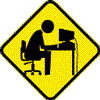Computer: Dell Precision desktop, Windows XP.
- I have two hard drives, C (system) and D (files)
- I run out of room on D so buy a new 1.5TB drive, and install it
- I boot up XP, format the drive using Disk Management, and set the partition as Primary
- I restart my computer
- Suddenly, before Windows manages to load up, I get the error message:
"Windows XP could not start because the following file is missing or corrupt: \WINDOWS\SYSTEM32\CONFIG\SYSTEM"
I've tried:
- Removing the new empty HDD and switching on again. I get the message: "Drive 1 not found: SErial ATA, SATA-1. Alert! Failed to detect one or more drives during POST. Strike F1 key to continue"
- Removing the empty HDD and swapping the system drive to the other HDD bay, same error message as above but with "Drive 0 not found"
- I've tried booting Partition Magic from a CD, and it didn't reveal any problems.
Can anyone help me?
I get the impression that when setting up my new hard drive in Disk Management, me selecting to have the partition as PRIMARY, may have screwed things up. I'm not sure if two drives can both be set to primary partitions? Then again, I've run Partition Magic from a bootable CD and it seems to show both C and D as primary.
I just don't understand why removing an empty HDD would cause the error message that it is missing. After all, there's nothing on it! Why would the computer care that it isn't in the bay?
Thanks all, any help or insight would be fantastic.
















 Sign In
Sign In Create Account
Create Account

